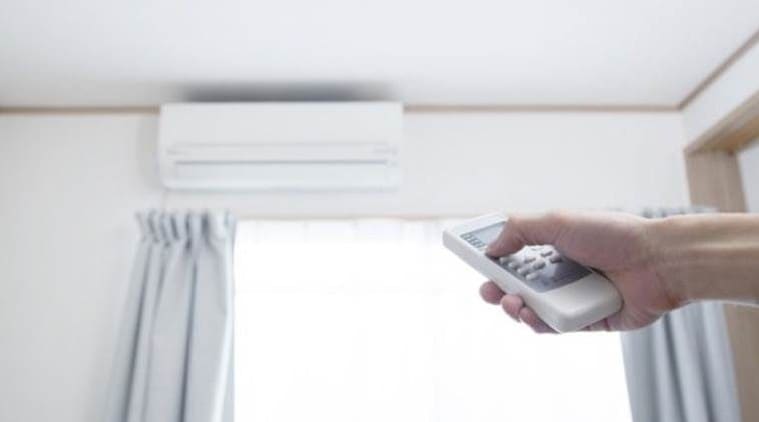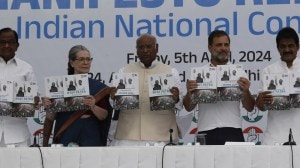- India
- International
ACs made in India but costlier: experts red-flag return to ’70s
Indeed, addressing the CII annual session Tuesday, Prime Minister Narendra Modi cited ACs as a priority sector, besides furniture, leather and footwear, for the government’s Make in India push to generate jobs.
 India imports more than 30 per cent of the domestic demand for ACs. “We need to rapidly reduce this (imports),” Modi said.
India imports more than 30 per cent of the domestic demand for ACs. “We need to rapidly reduce this (imports),” Modi said.
That the BJP government may turn increasingly protectionist while invoking ‘Make in India’ is best told through an example, appropriate for these times, air conditioners (ACs).
Indeed, addressing the CII annual session Tuesday, Prime Minister Narendra Modi cited ACs as a priority sector, besides furniture, leather and footwear, for the government’s Make in India push to generate jobs.
India imports more than 30 per cent of the domestic demand for ACs. “We need to rapidly reduce this (imports),” he said.
The proposed route to this, however, is unusual: an inverted duty structure under which duties on constituent components are higher than that on the finished product and may end up raising its cost.
A draft plan on the table of the Light Engineering Industries Section in the Department for Promotion of Industry and Internal Trade (DPIIT) proposes to increase the basic Customs duty on nine key AC components by as much as 50-165 per cent.

Read | Cellphones, jewellery, textiles: Govt identifies 10 sectors to cut imports
This when less than two years ago, on September 26, 2018, the Finance Ministry had already doubled the basic Customs duty on ACs to 20 per cent, giving in to demands of domestic AC manufacturers.
This has raised red flags for a section in India Inc. “The new proposal is a throwback to the 1970s… the dangerous protectionist times,” said a well-regarded CEO of an Indian manufacturing company, who has three big factories in western India, and has seen the draft DPIIT notification. “This is not promoting local industry, it is promoting uncompetitiveness and may inflate the cost as well,” the CEO said.
At the CII session urging India Inc to produce goods locally, Modi lauded India Inc for making an industry out of PPEs, with a capacity of 3 lakh kits a day, in less than three months.
This may be justified, said a veteran industrialist who did not wish to be named, but added that the government may be drawing wrong trade lessons from the pandemic.
“Self-reliance or atma nirbharta for medical supplies is good, especially during times of a Covid-like pandemic when global supply chains are completely disrupted. But this should not be confused with Make in India for ACs or refrigerators or furniture,” said the industrialist.
According to the Department of Commerce’s Export Import Data Bank, India imported ACs worth $1.2 billion in 2018-19, which is less than 0.25 per cent of India’s total imports. In the first 10 months 2019-20, value of AC imports stood at $789 million. If imports meet 30 per cent of domestic demand, the total market size is about $4 billion.
Express Explained | Is the push towards organised manufacturing the answer to India’s jobs crisis?
The draft plan proposes an increase in basic Customs duty for nine components that go into the making of air conditioners:
doubling the basic Customs duty on six key components – PCB controller, motor of the outdoor or indoor unit, cross flow fan, evaporator, metal parts used as body of outdoor unit and plastic part of indoor unit to 20 per cent; on the outdoor unit and indoor unit of the AC to 30 per cent from 20 per cent; on service valves from 7.5 per cent to 20 per cent; and on compressor from 12.5 per cent to 20 per cent.
This increase is to be spread over five years.
What the proposal ignores is the fact that over the last two decades, consumers have benefited the most from liberalisation.
Today, Tier 2 and Tier 3 cities account for around 50-55 per cent of the AC market. A study by Motilal Oswal said household penetration levels for ACs in India, seen as an aspirational rather than a luxury product, are still under 10 per cent, and, therefore, hold huge potential.
Over the last two years, entry of foreign brands such as Samsung, Daikin and Hitachi are chipping away at the sales of domestic producers such as Voltas, which is the market leader with an almost 25 per cent share. Godrej is another domestic player, which wants to increase its brand presence in this segment of household appliances.
A section in Corporate India, that benefits from protection through import duties, however, makes a strong case for government intervention that will generate jobs in India.
But many call for caution.
“Take the RCEP, for example. The government finally succumbed to domestic industry lobby, and backed out of the deal. It is easy to fall into the protectionism trap while trying to be successful with Make in India. You end up listening to people who tell you what you would like to hear… that India can become like China…,”said a former Commerce Secretary, who did not wish to be named.
“It is easier politically to gain approval of people at large, when it is about China… Domestic lobbies too always complain about dumping of cheap goods by China, which is also not completely untrue. But it is for a forward-looking government not to take knee-jerk action. Increasing duties on ACs and furniture do not suggest any strategic thinking,” said a trade economist, who has advised the government in the past.
“The problem is you cannot be selectively protectionist… you end up being protectionist, in general,” the economist said.
“The problem is you cannot be selectively protectionist… you end up being protectionist, in general,” the economist said. For instance, about 45 per cent of AC imports are probably from China, but then ACs are imported from Thailand, Korea, Japan, Singapore, UK, Germany and US too, which together make up about 50 per cent of AC imports. So, India is erecting barriers to trade not just with China, but other countries as well.
Apr 25: Latest News
- 01
- 02
- 03
- 04
- 05








































